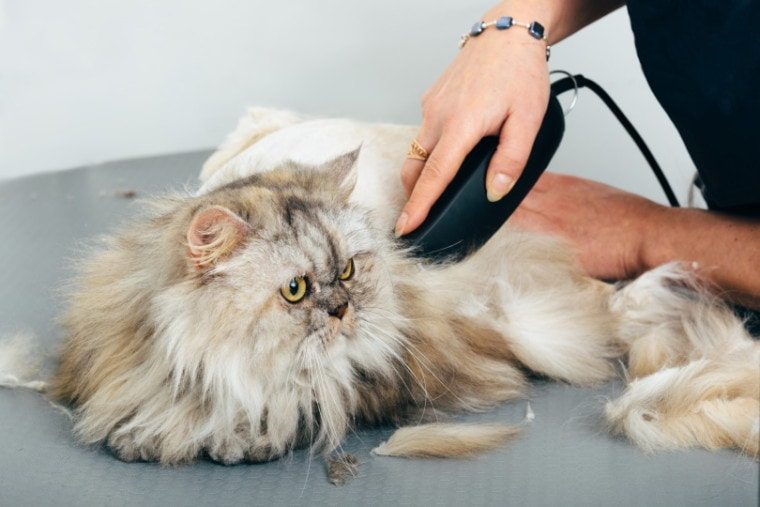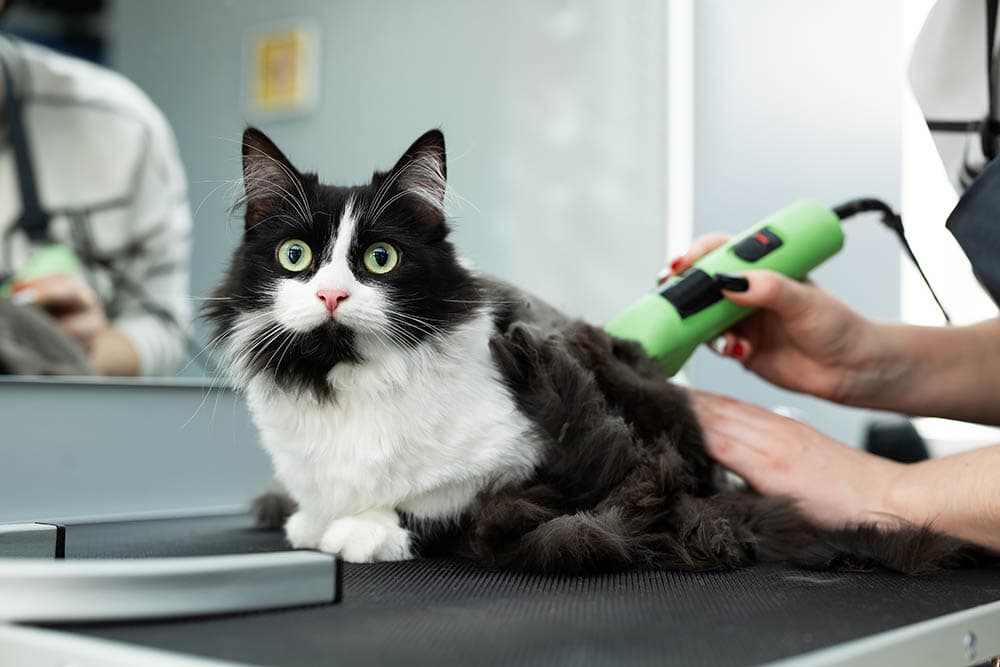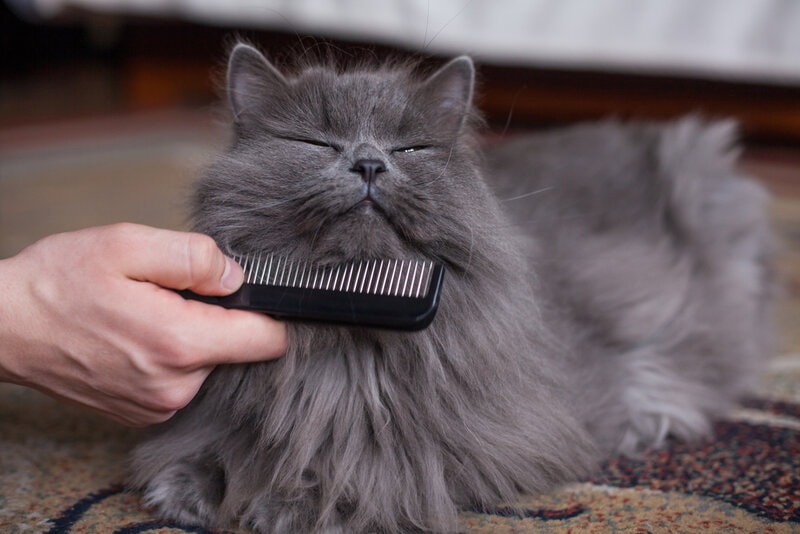
There are many reasons that a cat might need to grow their hair back. Sometimes it’s just a small patch after being at the vet’s, or maybe it’s the entire body due to mats. Either way, you might wonder how long it will take to see them back in their glorious coats.
Several factors can dictate how long it takes, but generally, it takes about 4 to 6 months for the fur of a longhaired cat to grow back and about 2 to 3 months for a shorthaired cat.
Here, we go over a few methods that can help encourage the fur to grow back a little faster, as well as what might impede the hair from growing back at all.
Why Would Anyone Need to Shave a Cat?
There are several occasions when it might be necessary to shave or cut a cat’s coat.
1. Mats
Longhaired cats are particularly prone to this problem, but it can happen to almost any cat if they aren’t regularly brushed. This is common in cats that have been rescued from a neglectful situation. While cats typically do an excellent job grooming themselves, they still need help from us, particularly if they are medium-haired or longhaired.
This also becomes more of a problem with overweight or senior cats or if they have some other physical condition that makes it more difficult for them to reach certain areas. If mats start to take over, brushing will only hurt the cat, and getting shaved down is the better option.

2. Surgery
Part of prepping a cat for surgery is shaving down the area that will be operated on, which keeps everything sanitary. It also helps keep the stitches clean and gives you the chance to keep an eye out for infection.
3. Grooming Purposes
Some people enjoy giving their cats funny haircuts, like the infamous lion cut. However, this should only be done by a groomer and only if you need to have your cat shaved down due to mats or if your longhaired cat hates being brushed and shaving them on occasion prevents mats from forming.
Just keep in mind that many cats get stressed about being shaved, and it should only be done if there isn’t any other option.

4. Health Condition
Certain health conditions can cause hair loss or make it challenging for the hair to grow back. However, these situations will require treatment from your vet.
In all these cases, you need to have your cat treated by your vet.
Can You Shave Your Cat?
It’s not recommended. Well-meaning cat owners have been known to accidentally nick their cat’s skin trying to cut out a mat. Cat’s skin is elastic and sensitive. When you pull up on the fur, the skin will move with it and is more likely to get cut.
Let your vet or a groomer deal with it if you’re trying to remove a mat. Otherwise, carefully use a comb that can act as a barrier between the mat and your cat’s skin.
Cats don’t always like being groomed and might move around too much for their safety, so try to leave the process to the professionals.

How Long Will It Take for Cat Hair to Grow Back?
There are certain factors that can dictate how long it takes for a cat’s hair to grow back. Whether it was shaved for a reason or fell out due to a health condition can make a difference, as can the length of your cat’s hair. Additionally, the older your cat is, the longer it can take for their fur to grow back.
In a healthy cat that’s been shaved, you’ll start to see fur growing back within a few weeks. Shorthaired cats will typically have their hair grown back in about 2 months. It depends on the thickness and length of the fur, but longhaired cats can take as long as 6 months before they regain their coats.
Are There Ways to Encourage Faster Hair Growth?
Your cat’s health is one of the biggest factors in how fast their hair grows. Instrumental in the health of your cat is in their diet.
Omega-3 fatty acids, particularly those from fish oil, can contribute to coat and skin health, so ensure that your cat’s food is supplemented with these essential nutrients. Also, look at zinc and vitamins A and E.
Additionally, foods high in animal protein can help sustain your cat’s energy and hair growth. In fact, if your cat’s hair doesn’t seem to be growing fast enough, look at your cat’s food, as sometimes the culprit is a lack of high-quality protein.
If your cat’s hair is taking its time to grow back, it might be because your cat is continuing to overgroom the area. Consider using an e-collar or a recovery suit that can stop your cat from licking and biting the area.
Finally, if you know that certain things cause stress in your cat, try to remove them or speak to your vet about ways to reduce your cat’s anxiety. You can also try products that help to calm cats.

Conclusion
Many things can lead to a cat having a shaved spot or hair loss, and other factors can impact how long it takes to grow back. Ensure that your cat has a good diet and enough vitamins, minerals, and other supplements to encourage healthy skin and coat.
Overall, be patient and keep your cat healthy and happy, and before you know it, your cat will have grown back their usual luxurious coat of fur.
See also:
- Why Is Your Cat So Staticky? 6 Reasons Why & Tips to Reduce
- How to Shave a Cat’s Bum: 5 Simple Vet-Reviewed Steps
Featured Image Credit: Peakstock, Shutterstock








